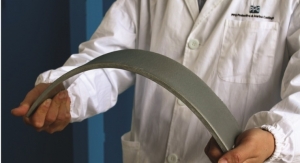03.25.19
Solvay’s new waterborne Halar ECTFE coating system broadens metal corrosion prevention applications for the chemical processing industry. The coating system is comprised of a high adhesion primer and topcoat and is easily applied using standard liquid spray equipment.
Solvay’s HALAR ECTFE powder coatings have been used for corrosion prevention for equipment in a range of industries including acids, mining, pulp and paper, pharmaceutical, food and beverage, and semi-conductor, among others. The new waterborne HALAR ECTFE LIQUID COATING TECHNOLOGY expands the range of end-use applications to those that are difficult or impossible to powder coat. This includes complex shapes, uneven surfaces, oversized vessels, pipe interiors, tanks and containers. Moreover, it provides engineers an alternative protective metal coating option to corrosion resistant alloys.
The new liquid coating technology provides the same unique combination of Halar ECTFE properties that delivers long-lasting performance and includes excellent chemical resistance, outstanding permeation resistance, exceptional surface properties, excellent adhesion and high purity.
“Sustainability was the compelling motive and driving force leading to the significant research and technological development of Solvay’s new waterborne Halar ECTFE liquid coating system,” said Brian Baleno, global business development manager Industrial, Energy & Environment at Solvay’s Specialty Polymers global business unit. “The environmentally-friendly, ultra-low VOC and Hazardous Air Pollutant-free formulation help meet stringent regulatory customer needs. Waterborne finishes provide greatly improved work environment conditions on the production line and for sprayers and can also help lower costs in relation to equipment clean-up which relies on water and inexpensive cleaning agents.”
Solvay’s waterborne Halar ECTFE liquid coatings, which can also be used without the primer, can be applied quickly, easily and uniformly in a range of thicknesses to meet requirements for various service conditions. They can be applied to an extensive range of substrates such as metals, glass, masonry, polymers and wood using most types of application equipment, including spray and dip coating. In addition to its high chemical resistance, it is hydrophobic with exceptional resistance to strong acids and bases (pH 1-14) and is not affected by any known solvent up to 150°C (302°F).




























